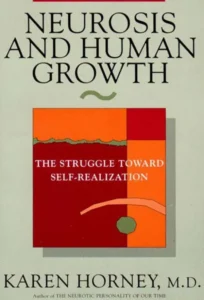What It Takes to Grow: Pioneering Psychoanalyst Karen Horney on the Key to Self-Realization
INSPIRATIONAL, 22 Apr 2024
Maria Popova | The Marginalian – TRANSCEND Media Service
 The measure of growth is not how much we have changed, but how harmoniously we have integrated our changes with all the selves we have been — those vessels of personhood stacked within the current self like Russian nesting dolls, not to be outgrown but to be tenderly incorporated. True growth is immensely difficult precisely because it requires befriending the parts of ourselves we have rejected or forgotten — what James Baldwin so memorably called “the doom and glory of knowing who you are and what you are”; it requires shedding all the inauthentic personae we have put on in the course of life under the forces of convention and compulsion; it requires living amicably with who we have been in order to fully live into who we can be.
The measure of growth is not how much we have changed, but how harmoniously we have integrated our changes with all the selves we have been — those vessels of personhood stacked within the current self like Russian nesting dolls, not to be outgrown but to be tenderly incorporated. True growth is immensely difficult precisely because it requires befriending the parts of ourselves we have rejected or forgotten — what James Baldwin so memorably called “the doom and glory of knowing who you are and what you are”; it requires shedding all the inauthentic personae we have put on in the course of life under the forces of convention and compulsion; it requires living amicably with who we have been in order to fully live into who we can be.
Those delicate and often difficult fundaments of true growth are what the German psychoanalyst Karen Horney (September 16, 1885–December 4, 1952) examined in the final years of her life in her uncommonly insightful book Neurosis and Human Growth: The Struggle Toward Self-Realization (public library).
A generation before Joan Didion observed that “character — the willingness to accept responsibility for one’s own life — is the source from which self-respect springs,” Horney writes:
A person can grow, in the true sense, only if he* assumes responsibility for himself.
Noting that a fulfilled and fulfilling life necessitates “the liberation and cultivation of the forces which lead to self-realization,” she considers the well-spring of that ultimate ideal in relation to growth:
You need not, and in fact cannot, teach an acorn to grow into an oak tree, but when given a chance, its intrinsic potentialities will develop. Similarly, the human individual, given a chance, tends to develop his particular human potentialities. He will develop then the unique alive forces of his real self: the clarity and depth of his own feelings, thoughts, wishes, interests; the ability to tap his own resources, the strength of his will power; the special capacities or gifts he may have; the faculty to express himself, and to relate himself to others with his spontaneous feelings. All this will in time enable him to find his set of values and his aims in life. In short, he will grow, substantially undiverted, toward self-realization.
Growth is only possible when the self being realized is the authentic self — “the real self as that central inner force, common to all human beings and yet unique in each, which is the deep source of growth.” And yet it can be maddeningly difficult to discern that real self beneath the costume of shoulds, beneath the armors donned in our confrontations with reality, beneath all the personae learned in the course of adapting to the world’s demands and assaults. E.E. Cummings knew this when he observed that “to be nobody-but-yourself — in a world which is doing its best, night and day, to make you everybody else — means to fight the hardest battle which any human being can fight.” From the moment we are born, we begin morphing that tender real self to the pressures of our emotional and physical environment — a process of adaptation that is also the beginning of our lifelong process of self-alienation, marked by an ongoing tyranny of shoulds — our parents’, our culture’s, our own. Horney considers the path to liberation and self-possession:
All kinds of pressure can easily divert our constructive energies into unconstructive or destructive channels. But… we do not need an inner strait jacket with which to shackle our spontaneity, nor the whip of inner dictates to drive us to perfection. There is no doubt that such disciplinary methods can succeed in suppressing undesirable factors, but there is also no doubt that they are injurious to our growth. We do not need them because we see a better possibility of dealing with destructive forces in ourselves: that of actually outgrowing them. The way toward this goal is an ever increasing awareness and understanding of ourselves. Self-knowledge, then, is not an aim in itself, but a means of liberating the forces of spontaneous growth.
In this sense, to work at ourselves becomes not only the prime moral obligation, but at the same time, in a very real sense, the prime moral privilege. To the extent that we take our growth seriously, it will be because of our own desire to do so. And as we lose the neurotic obsession with self, as we become free to grow ourselves, we also free ourselves to love and to feel concern for other people.

Growth, then, is not something we do only for and by ourselves, but something we do for and with others — a testament to the fact that human connection is “a root-factor of ordinary human growth.” And yet we alone are responsible — to ourselves and to others — for undertaking the process and following through with its unfolding. A century after Nietzsche considered the path to finding yourself, insisting that “no one can build you the bridge on which you, and only you, must cross the river of life,” Horney writes:
Only the individual himself can develop his given potentialities. But, like any other living organism, the human Individuum needs favorable conditions for his growth “from acorn into oak tree”; he needs an atmosphere of warmth to give him both a feeling of inner security and the inner freedom enabling him to have his own feelings and thoughts and to express himself. He needs the good will of others, not only to help him in his many needs but to guide and encourage him to become a mature and fulfilled individual. He also needs healthy friction with the wishes and wills of others. If he can thus grow with others, in love and in friction, he will also grow in accordance with his real self.
Neurosis and Human Growth is a revelatory read in its entirety. Complement this fragment with poet, philosopher, and activist Edward Carpenter on love, pain, and growth and poet Robert Penn Warren on the paradox of “finding yourself,” then revisit philosopher Amélie Rorty on the seven layers of selfhood.
_______________________________________
 My name is Maria Popova — a reader, a wonderer, and a lover of reality who makes sense of the world and herself through the essential inner dialogue that is the act of writing. The Marginalian (which bore the unbearable name Brain Pickings for its first 15 years) is my one-woman labor of love, exploring what it means to live a decent, inspired, substantive life of purpose and gladness. Founded in 2006 as a weekly email to seven friends, eventually brought online and now included in the Library of Congress permanent web archive, it is a record of my own becoming as a person — intellectually, creatively, spiritually, poetically — drawn from my extended marginalia on the search for meaning across literature, science, art, philosophy, and the various other tendrils of human thought and feeling. A private inquiry irradiated by the ultimate question, the great quickening of wonderment that binds us all: What is all this? (More…)
My name is Maria Popova — a reader, a wonderer, and a lover of reality who makes sense of the world and herself through the essential inner dialogue that is the act of writing. The Marginalian (which bore the unbearable name Brain Pickings for its first 15 years) is my one-woman labor of love, exploring what it means to live a decent, inspired, substantive life of purpose and gladness. Founded in 2006 as a weekly email to seven friends, eventually brought online and now included in the Library of Congress permanent web archive, it is a record of my own becoming as a person — intellectually, creatively, spiritually, poetically — drawn from my extended marginalia on the search for meaning across literature, science, art, philosophy, and the various other tendrils of human thought and feeling. A private inquiry irradiated by the ultimate question, the great quickening of wonderment that binds us all: What is all this? (More…)
Go to Original – themarginalian.org
Tags: Change, Growth, Inspirational, Life, Self Realization
DISCLAIMER: The statements, views and opinions expressed in pieces republished here are solely those of the authors and do not necessarily represent those of TMS. In accordance with title 17 U.S.C. section 107, this material is distributed without profit to those who have expressed a prior interest in receiving the included information for research and educational purposes. TMS has no affiliation whatsoever with the originator of this article nor is TMS endorsed or sponsored by the originator. “GO TO ORIGINAL” links are provided as a convenience to our readers and allow for verification of authenticity. However, as originating pages are often updated by their originating host sites, the versions posted may not match the versions our readers view when clicking the “GO TO ORIGINAL” links. This site contains copyrighted material the use of which has not always been specifically authorized by the copyright owner. We are making such material available in our efforts to advance understanding of environmental, political, human rights, economic, democracy, scientific, and social justice issues, etc. We believe this constitutes a ‘fair use’ of any such copyrighted material as provided for in section 107 of the US Copyright Law. In accordance with Title 17 U.S.C. Section 107, the material on this site is distributed without profit to those who have expressed a prior interest in receiving the included information for research and educational purposes. For more information go to: http://www.law.cornell.edu/uscode/17/107.shtml. If you wish to use copyrighted material from this site for purposes of your own that go beyond ‘fair use’, you must obtain permission from the copyright owner.
Join the discussion!
We welcome debate and dissent, but personal — ad hominem — attacks (on authors, other users or any individual), abuse and defamatory language will not be tolerated. Nor will we tolerate attempts to deliberately disrupt discussions. We aim to maintain an inviting space to focus on intelligent interactions and debates.
